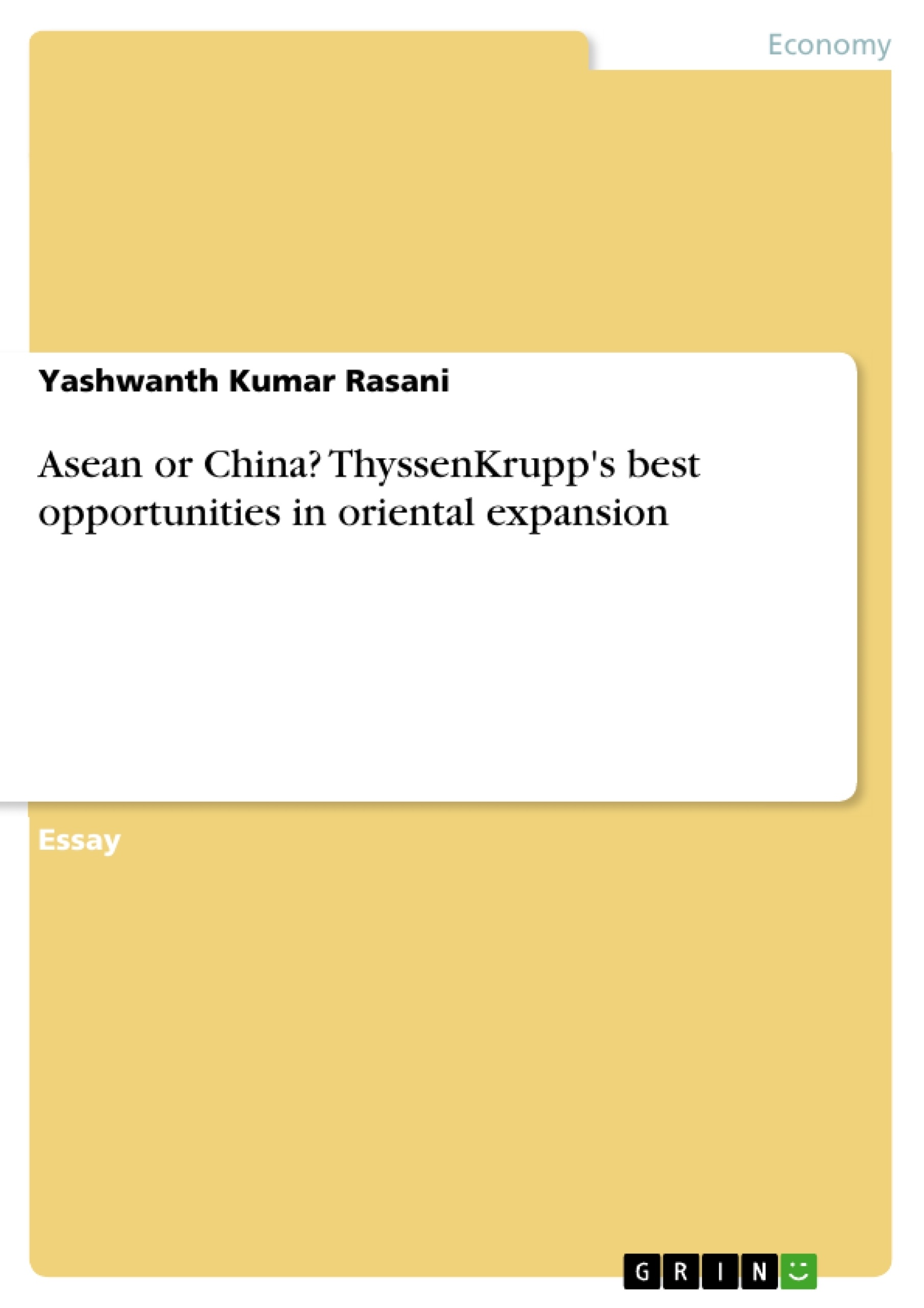This is a brief comparative market analysis of the Asian Business Operations of ThyssenKrupp, a German conglomerate. It is to categorize each business area/function of ThyssenKrupp and to analyze which Asian lookout, either China or ASEAN, would be an ideal destination for oriental expansion of the group in the near future. ASEAN (Association of South-East Asian Nations) is emerging as a new lookout in competition to China & India and this paper is to emphasize the importance of the region as a whole using prompt reasons.
Inhaltsverzeichnis (Table of Contents)
- ThyssenKrupp as a Group
- ThyssenKrupp in Asia
- ASEAN
- ASEAN Basic Fact Sheet
- Reasons Why ASEAN is a Better Investment Zone Compared to China
Zielsetzung und Themenschwerpunkte (Objectives and Key Themes)
This paper examines the potential of ASEAN as an investment zone for ThyssenKrupp, comparing its strengths and advantages to China. It highlights the various factors that make ASEAN an attractive option for the German conglomerate, emphasizing its diverse market, economic stability, and consumer demand.- The attractiveness of ASEAN as an investment destination for ThyssenKrupp
- Comparison of ASEAN and China as investment zones
- Key factors driving ASEAN's appeal, including diversity, economic stability, consumer demand, education, geography, and rate of return
- Challenges faced by China, including its homogenous market, economic volatility, income inequality, and housing bubble
- The potential benefits for ThyssenKrupp in expanding its operations to ASEAN
Zusammenfassung der Kapitel (Chapter Summaries)
- The first chapter provides an overview of ThyssenKrupp, highlighting its global presence, key business areas, and leadership position in various industries. It emphasizes the company's focus on innovation and expansion into Aerospace & Defense industries.
- The second chapter explores ThyssenKrupp's presence in Asia, emphasizing its growth in South Korea, India, China, and Japan. The chapter highlights the group's commitment to expanding its operations in the region and its contributions to infrastructure development through engineering and servicing of metros and bullet trains.
- The third chapter introduces ASEAN, outlining its composition, history, and economic significance. It describes ASEAN's vision for regional integration and its emergence as a united economic force. The chapter also discusses its growing role in international relations and its ambition to become a single market economy by 2015.
- The fourth chapter presents key facts about ASEAN, including its position as the seventh largest economy in the world, its status as a major tourist destination, and its large, young population. The chapter also highlights its abundant natural resources and its strategic location in Asia.
- The fifth chapter provides a detailed comparison of ASEAN and China as investment zones. It explores various factors that make ASEAN a more favorable option for ThyssenKrupp, including its diversity, economic stability, strong consumer demand, favorable educational environment, geographic advantages, and higher rate of return on investment.
Schlüsselwörter (Keywords)
The primary focus of this paper lies on analyzing ASEAN as an investment zone for ThyssenKrupp, contrasting it with China. The key themes explore the potential of ASEAN's diverse market, strong economic stability, and high consumer demand compared to China's homogenous market, economic volatility, and income inequality. Key concepts include foreign direct investment (FDI), economic growth, regional integration, and competitive advantages.
Excerpt out of 11 pages
- scroll top
- Quote paper
- Yashwanth Kumar Rasani (Author), 2014, Asean or China? ThyssenKrupp's best opportunities in oriental expansion, Munich, GRIN Verlag, https://www.grin.com/document/289129
Look inside the ebook



